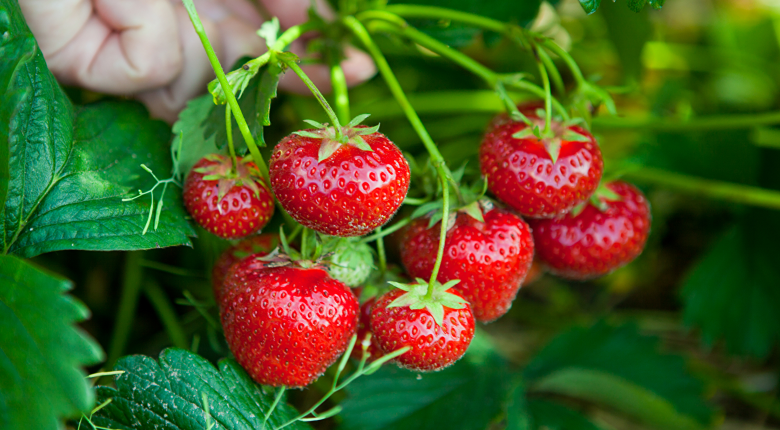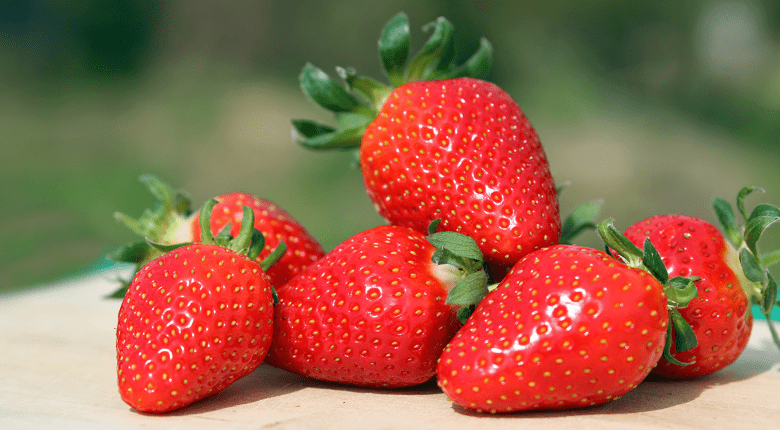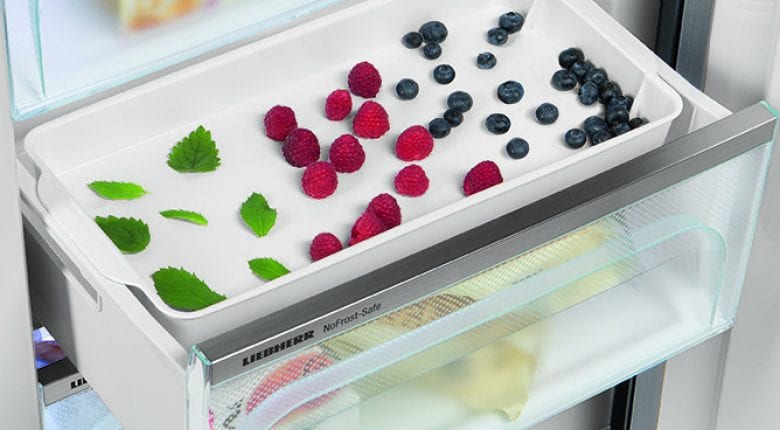What is Britain’s most-loved fruit? Well, according to at least one survey on our favourite fruit and vegetables, it’s the strawberry and because around this time of year they are popping up kitchens all over the UK
History of the strawberry
It might surprise you to learn that, as far back as the Stone Age, our ancestors were keen to get hold of a small-fruit variety of modern strawberries. In classical times, strawberries earnt the ‘fruit of the gods’ title from Roman poets Ovid, Pliny and Virgil. However, it wasn’t until somewhere between the 14th and 15th centuries that the small-fruit garden strawberry started to be cultivated in England and France, and not until the 17th century that the large-fruit variety was introduced to Europe from Canada. After this lengthy courtship process, and by the middle of the 18th century, the strawberry that we all know and love today finally achieved widespread popularity.

‘Pick your own strawberries’ is a much-loved British pastime in the summer.
Strawberry nutrition and health benefits
Aside from their seductive taste strawberries really pack a punch when it comes to nutrition and potential health benefits. With a higher vitamin C content than either lemons or oranges, strawberries could, therefore, help give your immune system a decent boost. They’re also rich in vitamin K and minerals such as calcium, iron and zinc and contain phytonutrients and flavonoids which give strawberries their deliciously vibrant red colour. Throughout history strawberries have been used medicinally, and are believed by many to help with digestive problems, skin irritations and even teeth whitening! Their fibre and fructose content may contribute to blood sugar regulation by slowing digestion whilst the fibre may help with hunger too.
There have been a number of scientific studies of the potential health benefits of strawberries, from lowering the risk of cardiovascular diseases to reduced rates of cognitive decline in older adults.
There’s also some evidence that the antioxidants in strawberries may help reduce the formation of blood clots that are linked with stroke and could potentially help to fight cancer. The powerful antioxidants are believed to have powerful anti-inflammatory effects, so having a regular serving of strawberries may also help conditions like arthritis too.
How many calories are in strawberries?
Weighing in at about 32 kcal per 100g, strawberries are very much a low-calorie indulgence that can be enjoyed and then enjoyed some more. It may not cross your mind to do so but next time you cut off their leaves why not salvage them? Strawberry leaves can be eaten raw, cooked or even used to make tea.
Strawberries water content
Although strawberries consist of up to 90% water they still burst with flavour. The more sun strawberries enjoy during ripening, the greater the amount of fruit acids, fructose, and ‘aromatic substances’ i.e. the ‘secret ingredients’ that make them so delicious.

What kind of fruit is a strawberry?
Botanically speaking, strawberries, like raspberries, aren’t technically berries. Strawberries are accessory fruits. This means that they come from a part of the flower besides the ovary. In the case of strawberries, some of the fleshy part comes from the receptacle, in the same way as figs and mulberries.
Types of strawberries
There are actually several different types of strawberry, including:
Early season varieties: Honeoye, Christine, and Gariguette (mid-June to early July)
Mid season varieties: Cambridge Favourite, Sonata, Hapil, Manille and Elsanta (mid-summer fruiters from late June to mid-July)
Late season varieties: Florence, Fenella and Symphony (throughout July)
Everbearers: Flamenco, Malling Opal and Mara des Bois (mid-August to mid-October)
Alpine: Fraise des Bois and Alexandria (spring to autumn)
Source and more detailed information: Gardener’s World
Keeping strawberries fresh for longer
It probably goes without saying that the best-tasting strawberries are those eaten straight after harvesting as, even after just a few hours, they begin to lose their flavour. Once harvested, strawberries should be stored in a refrigerator as soon as possible and, for the very best results, wash them and lay them out on a tray lined with kitchen roll. In a refrigerator they will keep for 1-2 days.
If you want to enjoy your strawberries for even longer, store them in a Liebherr BioFresh compartment where they can be kept for up to 7 days. Please note: ripened strawberries are very susceptible to damage from physical pressure and moisture, both of which have a detrimental effect on flavour, nutrient content and shape, and so it is not advisable to keep strawberries for extended periods as a normal matter of course.

Strawberries will stay fresh for up to 7 days in BioFresh storage
What to consider when freezing
Although frozen strawberries can be safely kept for up to 2 years, their appearance will inevitably suffer somewhat during the defrosting process due to their high water content. Strawberries that have been defrosted are therefore not ideal for cakes or tarts where their visual appearance is important; they are best used in mousses, cheesecakes and ice cream.
Our tip: Wash strawberries before freezing but be aware that strawberries do not like cold showers or direct jets of water. The best way to clean your strawberries is in a bowl of water. After rinsing, the strawberries should be carefully placed on a tray to dry and, only at this point, should the stalks and leaves be removed, otherwise flavour will be lost.
The herb and berry compartment for freezing fruit

Liebherr’s herb and berry compartment allows you to freeze strawberries perfectly. They will not stick together during freezing and they can then be easily portioned and transferred to freezer bags or containers. The strawberries should be spread out in the herb and berry compartment and allowed to freeze for around 10 – 12 hours. Traditional freezer bags or resealable plastic containers are suitable for subsequent storage, but these should be airtight to prevent water loss. Any strawberries with signs of mould or significant pressure damage should be removed straight away as their presence can spoil the other fruit.
What’s your favourite way to eat strawberries? Is there a variety we haven’t mentioned that you love? Get in touch with us on on Facebook, Twitter, Instagram or Pinterest.
